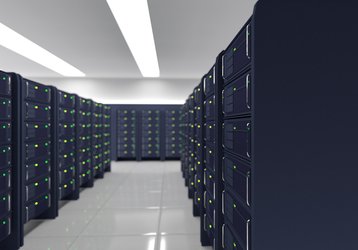We’re living through a historic transition, with billions of devices connecting to the Internet as enterprises turn to new technologies like generative AI and Machine Learning to make sense of the enormous quantity of data being churned out each day.
The fact is that energy demands stemming from our appetite for new technology is fast reaching the breaking point.
As we deploy more and more technology – not just IoT, but blockchain, 5G, health technology, and more – data centers will need increasing amounts of energy to function.
Indeed, McKinsey now projects that data centers will need 30 gigawatts of additional capacity by the end of this decade.
That’s an enormous amount of energy. Keeping pace with that exploding demand poses daunting challenges, especially when it comes to power delivery and sustainability.
What’s in the way?
We didn’t arrive at this point overnight, and the challenges won’t be solved overnight either.
This is a project that will require time, money, and resources to expand our existing infrastructure to meet demand.
It starts with the question of power generation, whether we’re talking about current natural gas or nuclear power plants or a shift to renewable sources, such as wind, solar, or hydro.
All will require significant infrastructure upgrades, including the use of substantial amounts of real estate to construct the necessary transmission lines, energy substations, and solar farms.
At the same time, the industry must contend with capacity constraints when it comes to shortages of labor and materials used for construction.
The supply-demand imbalance has worsened this year due to the myriad hurricanes and ice storms that have wreaked havoc over the course of 2023.
With so many reconstruction projects underway at the same time, there are added constraints on labor and equipment availability for the construction of new transmission and substation lines.
What’s it going to take?
Clearly, there’s an acute need to build up our infrastructure. The US market is feeling its way through this process now.
I’ve been encouraged by how independent power producers and utilities have come together to try to meet the challenge.
We’re seeing a convergence of markets where utilities, hyper scalers, and renewable developers are collaborating to try to put in place an infrastructure that can handle this massive demand.
Also of note, major transmission lines are being built – with many spanning the Rockies to connect the Eastern and Western regions of the national grid, a move that’s going to add capacity across rural locales as well as improve efficiency.
When it comes to generating all this power, we’re going to have to strike a balance between sustainability and meeting energy demand. Yes, sustainability is incredibly important.
At the same time, today’s solar farm cannot stand alone and support 400 megawatts of power by itself. In the short term, at least, redundancy and 24/7 power will require pairing a constant source of energy, such as natural gas or nuclear, with renewables like wind, solar, and hydro.
That’s not the only way cooperation will come into play. No single organization can tackle these challenges on their own; the complexity, material requirements, labor challenges, and innovation know-how required to execute these colossal power generation projects will demand an ecosystem of partners.
By bringing together experts across these fields, these projects have a better chance of success while minimizing costs and timelines.
Keeping the lights on for data centers
Recent technological innovations like generative AI are incredibly exciting and have the power to change the world as we know it.
However, when it comes to power, these technologies are also equally demanding.
Thankfully, innovations of equal caliber are underway in our energy sector, which is embracing cooperation to meet the power demands of these transformative technologies.
By working together, players from utilities and power producers to land developers and construction companies can connect the entire globe to the power it needs to keep the lights on in modern data centers – thereby ushering in all the benefits these technologies will bring.





